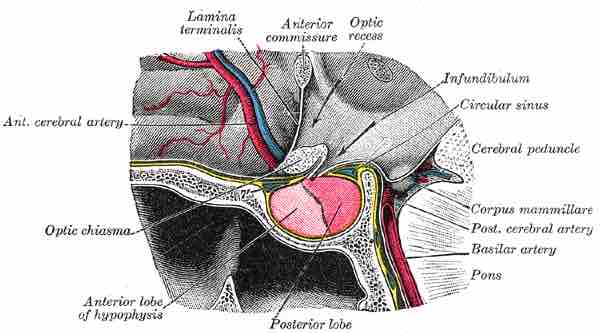The pituitary gland consists of two components: the anterior pituitary and the posterior pituitary, and is functionally linked to the hypothalamus by the pituitary stalk (also named the infundibular stem, or simply the infundibulum).
Whilst the pituitary gland is known as the master endocrine gland, both of the lobes are under the control of the hypothalamus: the anterior pituitary receives its signals from the parvocellular neurons, and the posterior pituitary receives its signals from magnocellular neurons.
The anterior lobe of the pituitary receives hypothalamic-releasing hormones from the hypothalamus that bind with receptors on endocrine cells in the anterior pituitary that regulate the release of adrenal hormones into the circulatory system. Hormones from the hypothalamus are rapidly degraded in the anterior pituitary, which prevents them from entering the circulatory system.
The posterior lobe of the pituitary gland develops as an extension of the hypothalamus. As such, it is not capable of producing its own hormones; instead, it stores hypothalamic hormones for later release into the systemic circulation.

Pituitary gland
The anterior and posterior lobes of the pituitary (hypophysis) gland are shown.